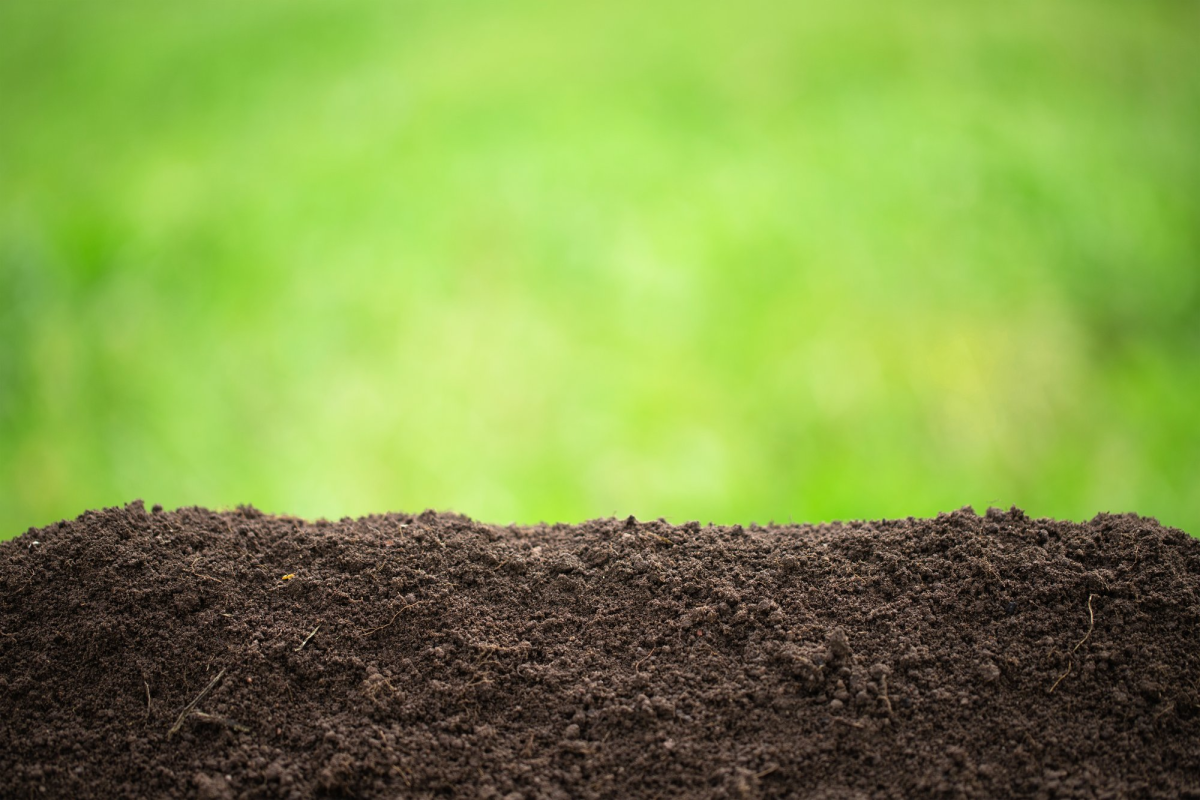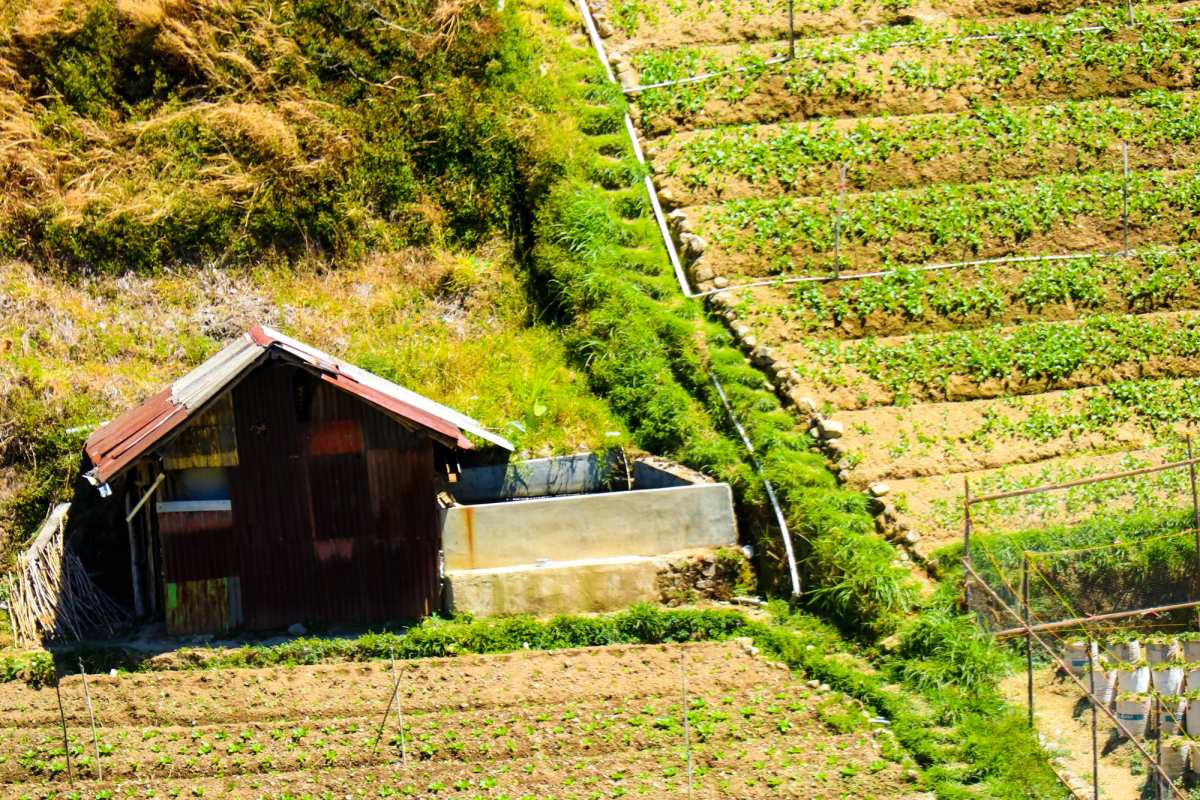Soil Regeneration
The number of people engaged in farming around the world, and the trends in the amount of land used for producing food tell a rather interesting story that will be the main topic of discussion here.
When too few people are engaged in food production, or when people have too little land, they can subject the land to intense, unrelenting pressure, with disastrous results for human health, soil health, and the environment. We will also discuss how NewVistas’ strategies on soil regeneration, coupled with sustainable agricultural practices are the only avenue left to sustainably feed the planet in the years ahead.
Intense small-scale farming in China
The latest data from China shows that the average Chinese farm is about 0.43 hectares or slightly more than 1 acre. These farms, which cumulatively account for 11.3 of China’s total landmass, are supposed to feed a 1.4 billion-strong population, while also providing residence for 38% of the population. 1
For years, Chinese authorities have championed increased agricultural output from the available land, closely tying food security to national security, at a time when geopolitics is becoming more complicated. For instance, the 14th Five-year Plan, covering 2021 – 2025, 2 says that China must produce 650 million tons of grain every year. Additionally, as the Chinese become more affluent, their tastes are changing, preferring food that was once only to be found on the affluent classes’ plates.
The pressure to produce greater quantities of varied food has pushed Chinese farmers to use synthetic fertilizers, pesticides, and herbicides at an unprecedented level. In 2018, China used 27.8% of the world’s potassium fertilizers, and 43% of pesticides. 3 This is despite China having only 8.5% of the world’s cropland, and with which it needs to feed 18% of the world’s population. The food levels have mostly been met, with China announcing plans to increase ethanol use by vehicles, partly to reduce fossil fuels use, but also to control excess grain output, chiefly maize. 4 The downside has been disastrous, however. Today, only 80% of china’s arable land can be used for any meaningful agriculture, the rest having been severely polluted by agrochemicals, and to a lesser degree, industrial waste. 5
Intense large-scale farming in America
In many respects, America is the complete opposite of China. Here, 2.01 million farmers have an average landholding of 445 acres, translating to more than 895 million acres of farmland. 6 This statistic owes much to history, the population density of the US when compared to China, and the Green Revolution. The famed German chemist, Justus von Liebig discovered in the 1840s that plants needed adequate amounts of potassium, nitrogen, and phosphorus to grow well. 7 On his part, Fritz Haber invented a means of extracting nitrogen from the atmosphere and converting it to ammonia. These advances set in motion the processes that would in time combine with mechanical technology developments, and birth the Green Revolution.

Before von Liebig’s discovery, farmers had always known that after exploiting the soil by planting plants, the land should be left to regenerate, before it could be used again. Von Liebig ad others however championed the belief that soil was nothing more than a substrate, whose purpose was to support roots and store the main chemicals needed to support plant growth. Suddenly, marginal land in Kansas, Nebraska, and Texas became ideal farmland, tripling between 1900 and 1930. 8
Unlike China, where farmers want to plant a variety of crops for the market and subsistence, American farmers, aided by technology agrochemicals, were able to exploit large areas with the economics of scale and a favorable market incentivizing them sufficiently. Farming such large parcels of land must be industrialized and be aided by vast amounts of agrochemicals. The result has been diminishing return from land with the very-present temptation to use more fertilizer only being arrested by government regulation.
Across the world, the situation remains the same. Some 64% of the world’s cropland is in danger of being polluted to the extent that food grown there would be significantly unsafe. 9 Besides oil pollution, over-cultivation, poor agricultural practices, and planting of crops that do not add any value to soil restoration have all been cited as significantly jeopardizing the plant’s ability to feed itself. The link between agrochemicals and some diseases, especially cancer and heart disease. 10
NewVistas and soil regeneration
As we have discussed above, modern farming practices destroy the soil, resulting in less farm yield. Soils with extensive amounts of fertilizer have a degraded ability to filter contaminants, 11 While intensive farming exposes soil to elements that change its quality, aid soil erosion, and soil compaction. All these outcomes result in poor crop yield, meaning that either more fertilizer has to be applied, or more land needs to be converted into cropland.
Stopping this worrisome trend requires soil regeneration and conservation through the adoption of sound agricultural practices. Several methods exist. Depending on the crop, the climate, and the soil characteristics of where the farm is, we can regenerate the soil using the following methods:
- Elimination of synthetic farming aids
- Use of cover crops and minimized tillage
- Integrate animal and crop farming
- Permaculture
Elimination of synthetic farming aids – While the farmers abandoned humus and manure in favor of synthetic fertilizer and pesticides quickly reaped bountiful, researchers are now showing a compelling case for natural, organic farming aids. At NewVistas, naturally occurring fertilizers such as compost, and guano will be used. These aids will enable the soil to be healthy – as a vibrant ecosystem, and in the process, reduce soil pollution caused by decades of use of harmful chemicals. The use of compost will also, in conjunction with other methods, accelerate topsoil formation.
Use of cover crops and minimized tillage – cover crops have been found to protect the soil from overexposure to the sun while enriching the soil through carbon sequestration. After cover crops take in carbon from the atmosphere, they then feed organisms in the soil, including bacteria and earthworms, a factor that raises carbon levels in the soil over time. Closely tied to this is minimized tillage. Where possible, tillage will not be used. In instances where it is necessary, NewVistas farmers will strive to use tillers that cause minimal disruption to the soil, such as the strip-tiller, as opposed to the moldboard plow that extensively destroys the soil’s top layer.
Integrate animal and crop farming – cover crops can be useful pastures for animals when the land is allowed to lie fallow for soil to naturally regenerate. As the animals graze, they can then enrich the soil with manure, increasing the soil’s organic matter in time for the next planting season. One such method that NewVistas will employ has been by Pasturebird, an American company. The company, working with Nasa scientists, has developed a robotic coop that moves across pastures, enabling the chicken to graze on the land, while enriching it. The giant tent can hold up to 6000 chickens at a time.
Increased diversity – farming the same crop at the same place all the time removes the same nutrients from the soil and attracts the same pathogens. This quickly degrades the soil ecosystem, which is forced to give more than it receives, and beyond its capacity to do so. The NewVistas farming model will discourage monocultural farming in favor of fields with a variety of crops that will grow symbiotically.
In addition to permaculture, which calls for an agricultural approach in tune with nature, these methods have shown that they can be economically viable. They are also scalable, enabling farms to grow food for as many people as intense farming feeds today. Intensive farming has proven to be unsustainable, degrading to the environment, and a producer of low-quality food. Methods that focus on soil regeneration, and an agricultural method that is indeed beneficial to the ecosystem, will be prioritized.
- As with most other countries on the planet, China uses a large part of its land for rearing animals. Pastureland takes up 41.8 of available land on pasture or 76.4% of all land available for agriculture. China’s rural population has been steadily decreasing, from more than 50% in 2010 to 38% in 2020.[↩]
- China has been on a drive to ensure self-sufficiency in food. It sees an inability to do so as opening up new vulnerabilities in global politics, while also being exposed to global uncertainties which may prevent it from ensuring universal food security at home.[↩]
- Research has shown that the inability to exploit economies of scale has deeply affected Chinese farmers’ capacity to develop. Besides the potassium fertilizer, China also used 26.1% of all nitrogen fertilizer, and 19.4% of phosphate-based fertilizers.[↩]
- China has been on an ambitious drive to increase the use of ethanol to fuel cars, as a means of reducing carbon emissions among other harmful gases. The country had initially set 2020 as the year when all fuel would have contained at least 10% ethanol. While the plan has been delayed, it is still being pursued – with corn being the primary producer of ethanol.[↩]
- Much of the polluted land may be withdrawn from agriculture, putting even more pressure on the remaining farms. Chinese authorities report that 3.3 million hectares in grain-producing regions are polluted, with fears of dire health challenges in the years to come.[↩]
- Liebig’s assumption that soil was only a substrate ignored the evolution that grass varieties in marginal lands had undergone to reach water several feet below, something that annual crops could not achieve. According to Liebig, plants had only used the three chemicals. This could be easily amended by returning the chemicals in form of fertilizer, instead of letting the land lay fallow.[↩]
- The Haber-Bosch process had spectacular results. Though energy-intensive, farmers were suddenly reaping five times more corn, and between 3 and 4 times more rice and wheat. Historians have opined that without the Haber-Bosch process, half of the people alive would expect to starve, or would need at least 50% of the habitable land to grow crops, unlike the 15% that is required today.[↩]
- The devastating effects of the mistaken idea that “the rain follows the plow” were seen when the entire plains were turned into a dustbowl, after a persistent drought. The loss of topsoil, which in some cases takes as many as 500 years to gain an inch, was particularly damaging. Today, farmers are relying on irrigation, drawing on a large aquifer, the Ogallala. The aquifer is, however, running dry due to overuse. However, soil regeneration has shown that the rate of topsoil accumulation can be speeded up, with some farmers reporting gains of up to 6 inches in a few decades.[↩]
- Despite the dangers involved, from destabilizing ecosystems to destroying water sources that humans and animals depend on, researchers expect global pesticide use to increase, driven by a bigger demand for food, and decreasing arable land.[↩]
- People who are exposed to agrochemicals have significantly higher chances of developing cancer and heart disease. While modern agrochemicals have not been associated with these illnesses so far, earlier versions remain in the soil for a long time, potentially finding their way into the food chain.[↩]
- Sustained use of fertilizer causes the accumulation of heavy metals in the soil. Over time, this severely affects the soil’s productivity and may also affect human health. A key example is the element cadmium, which has been linked with kidney disease, and weak bones, and is considered a cancer-causing agent.[↩]


